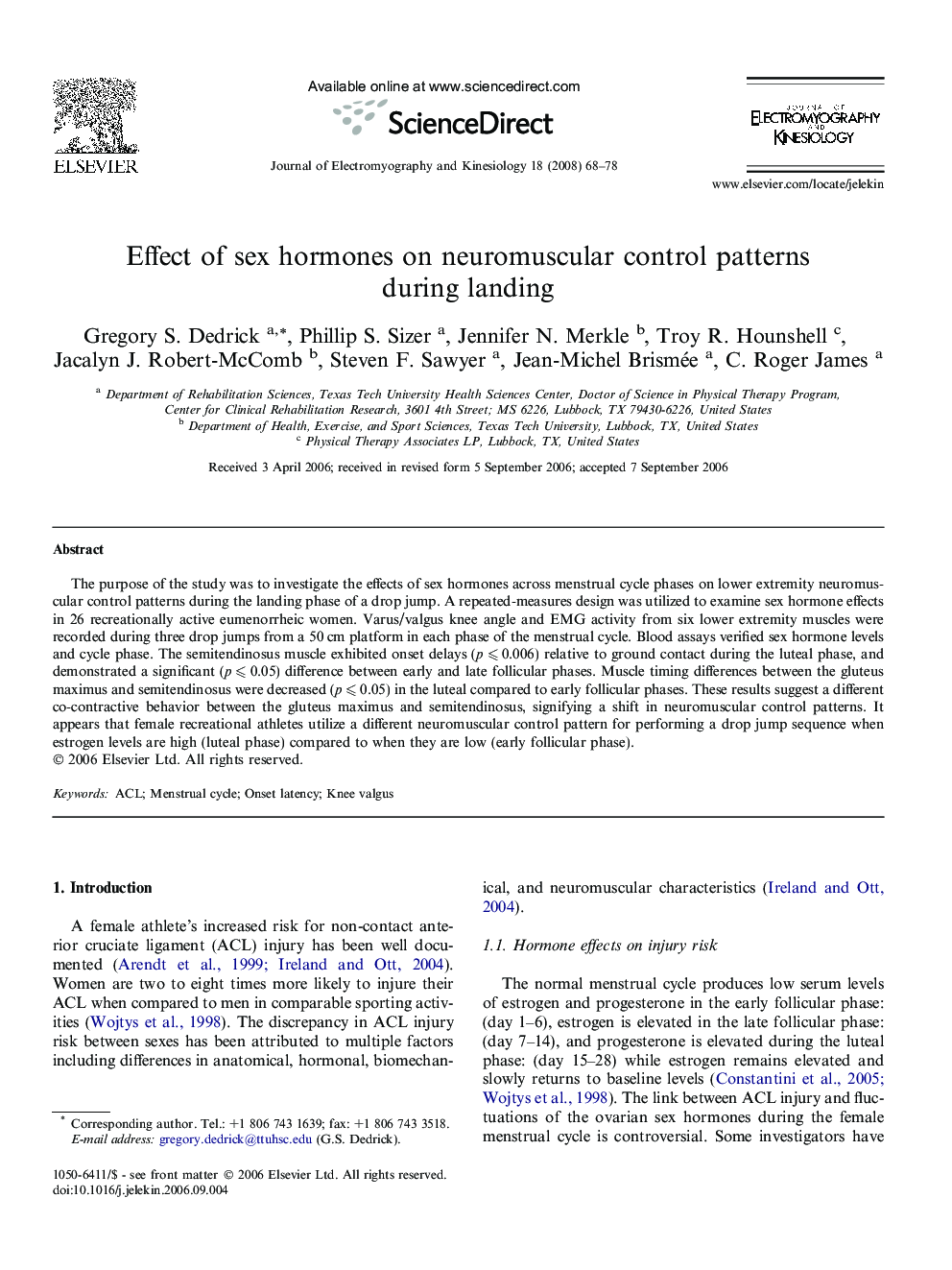| Article ID | Journal | Published Year | Pages | File Type |
|---|---|---|---|---|
| 4065371 | Journal of Electromyography and Kinesiology | 2008 | 11 Pages |
The purpose of the study was to investigate the effects of sex hormones across menstrual cycle phases on lower extremity neuromuscular control patterns during the landing phase of a drop jump. A repeated-measures design was utilized to examine sex hormone effects in 26 recreationally active eumenorrheic women. Varus/valgus knee angle and EMG activity from six lower extremity muscles were recorded during three drop jumps from a 50 cm platform in each phase of the menstrual cycle. Blood assays verified sex hormone levels and cycle phase. The semitendinosus muscle exhibited onset delays (p ⩽ 0.006) relative to ground contact during the luteal phase, and demonstrated a significant (p ⩽ 0.05) difference between early and late follicular phases. Muscle timing differences between the gluteus maximus and semitendinosus were decreased (p ⩽ 0.05) in the luteal compared to early follicular phases. These results suggest a different co-contractive behavior between the gluteus maximus and semitendinosus, signifying a shift in neuromuscular control patterns. It appears that female recreational athletes utilize a different neuromuscular control pattern for performing a drop jump sequence when estrogen levels are high (luteal phase) compared to when they are low (early follicular phase).
